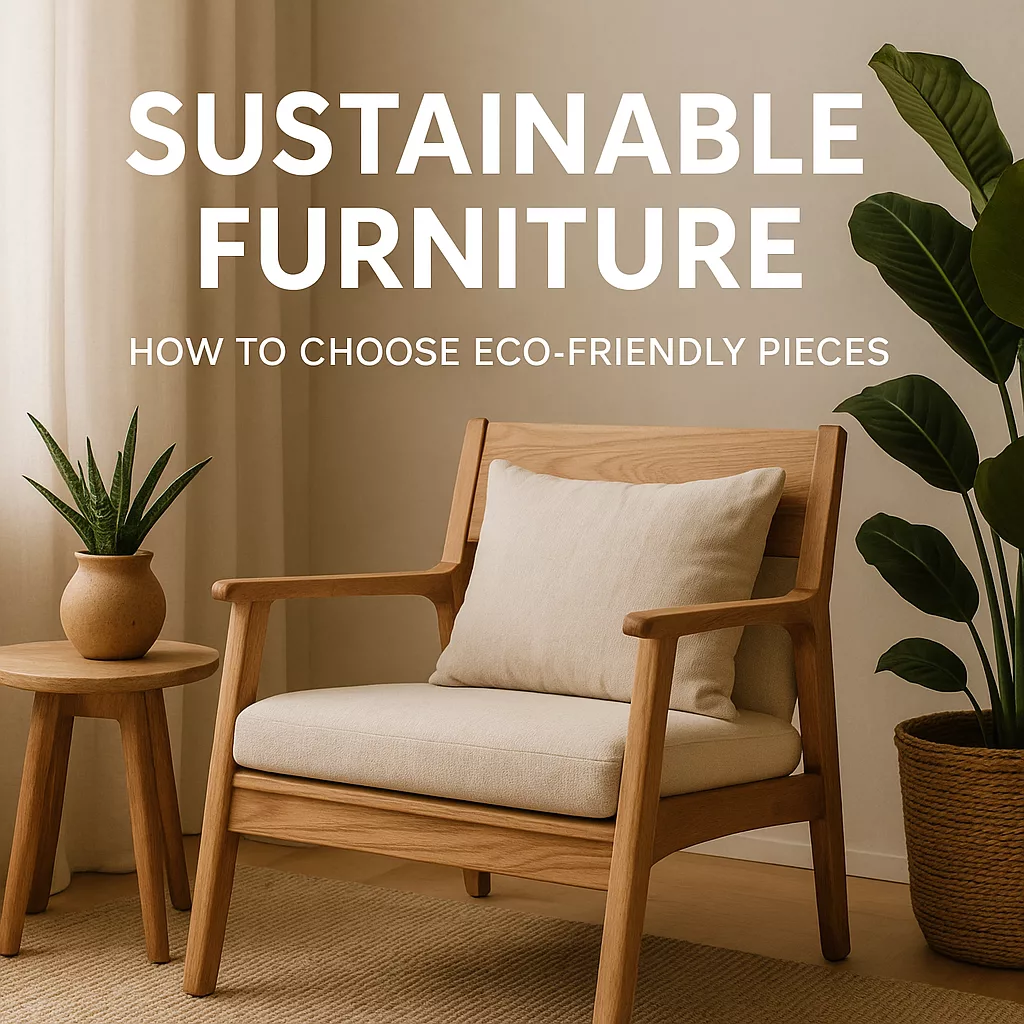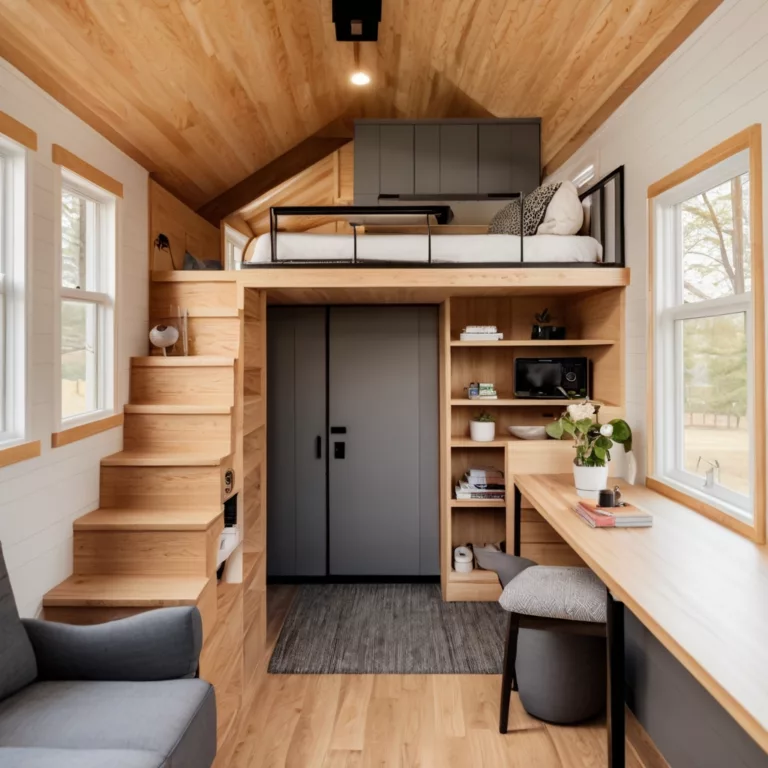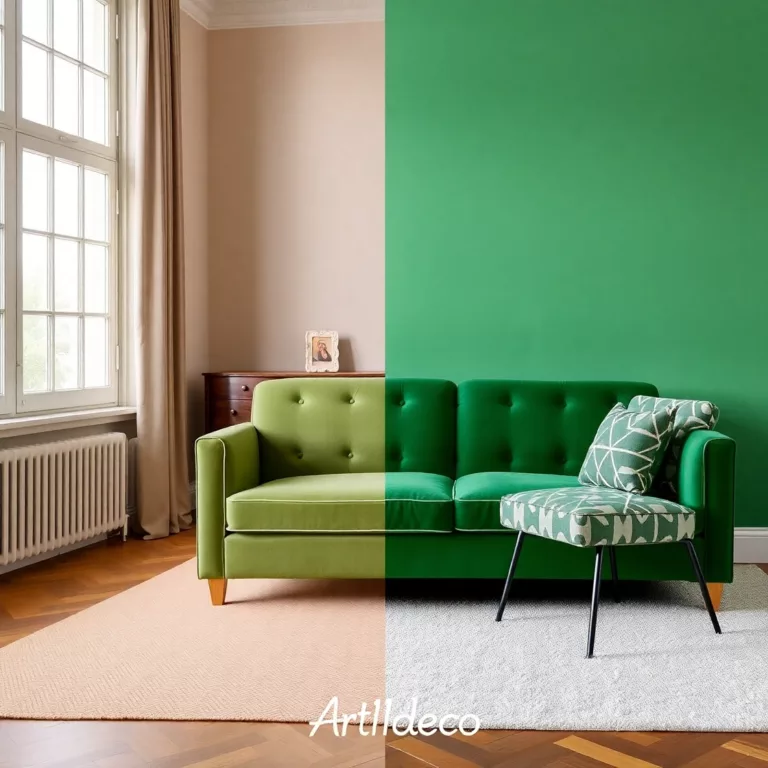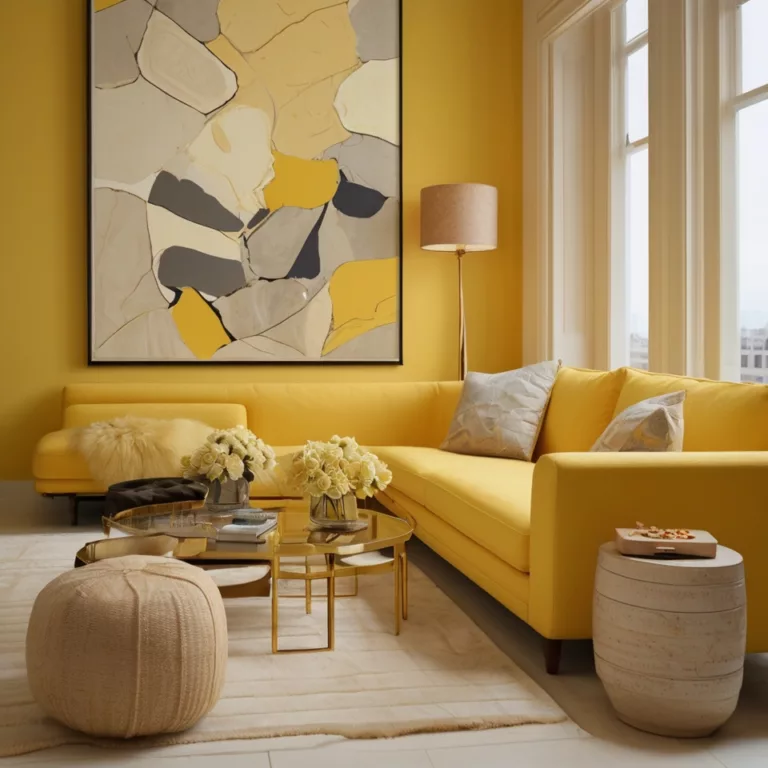
In today’s environmentally conscious world, sustainable furniture has become more than just a trend—it’s a necessity. As consumers become increasingly aware of their environmental impact, the demand for eco-friendly furniture that combines longevity with environmental responsibility continues to grow. This comprehensive guide will help you navigate the world of sustainable furniture, ensuring you make informed decisions that benefit both your home and the planet.
Understanding Sustainable Furniture

Sustainable furniture represents a fundamental shift in how we approach home furnishing. Unlike traditional furniture manufacturing that often prioritizes cost over environmental impact, sustainable furniture considers the entire lifecycle of each piece—from raw material sourcing to end-of-life disposal.
The concept of sustainable furniture encompasses multiple dimensions of environmental responsibility. First, it involves using materials that are renewable, recycled, or have minimal environmental impact during extraction. Second, sustainable furniture manufacturing processes minimize waste, reduce energy consumption, and limit harmful emissions.
Third, sustainable furniture design prioritizes durability and timeless aesthetics over trendy designs that quickly become outdated. This approach ensures that sustainable furniture pieces remain functional and visually appealing for decades, reducing the need for frequent replacements.
The environmental benefits of choosing sustainable furniture extend far beyond individual purchases. When consumers collectively opt for sustainable furniture, they drive market demand that encourages more manufacturers to adopt eco-friendly practices. This ripple effect helps transform the entire furniture industry toward more responsible production methods.
Understanding sustainable furniture also means recognizing the false economy of cheap, disposable furniture. While low-cost pieces may seem attractive initially, their short lifespan and poor construction quality often result in higher long-term costs and increased environmental waste.
Materials That Define Sustainable Furniture

Certified Wood Sources
The foundation of most sustainable furniture lies in responsibly sourced wood. Forest Stewardship Council (FSC) certified wood ensures that timber comes from forests managed according to strict environmental, social, and economic standards. FSC certification guarantees that sustainable furniture made from certified wood contributes to forest conservation rather than deforestation.
Sustainable lumber species for sustainable furniture include fast-growing hardwoods like bamboo, which technically isn’t wood but a grass that regenerates quickly. Oak, maple, and cherry from certified sources also provide excellent options for sustainable furniture, offering both durability and beautiful natural grain patterns.
Reclaimed wood represents another excellent choice for sustainable furniture. Salvaged from old buildings, bridges, or decommissioned structures, reclaimed wood gives new life to materials that would otherwise end up in landfills. Sustainable furniture crafted from reclaimed wood often features unique character marks and patina that add distinctive charm to each piece.
Eco-Friendly Upholstery Materials
The textiles used in sustainable furniture play a crucial role in overall environmental impact. Organic cotton, grown without synthetic pesticides or fertilizers, provides a clean, comfortable option for sustainable furniture upholstery. Hemp fiber offers exceptional durability and naturally resists mold and mildew, making it ideal for sustainable furniture in humid environments.
Recycled polyester fabrics, created from post-consumer plastic bottles, demonstrate how waste materials can be transformed into functional sustainable furniture components. These fabrics often match or exceed the performance characteristics of virgin polyester while diverting plastic waste from landfills and oceans.
Natural latex foam, derived from rubber tree sap, provides sustainable cushioning for sustainable furniture without the harmful chemicals found in conventional foam. This renewable material offers excellent support and breathability while maintaining its shape for years.
Non-Toxic Finishes and Adhesives
Traditional furniture manufacturing often relies on formaldehyde-based adhesives and finishes that continue to off-gas harmful chemicals for years after production. Sustainable furniture manufacturers use water-based finishes, natural oils, and waxes that provide excellent protection without compromising indoor air quality.
Low-VOC (Volatile Organic Compound) stains and sealers ensure that sustainable furniture contributes to healthier indoor environments. These finishes provide the same protective qualities as conventional options while minimizing chemical emissions that can cause respiratory irritation and other health issues.
Plant-based adhesives, derived from sources like soy protein, offer strong bonding capabilities for sustainable furniture construction without the environmental and health concerns associated with synthetic alternatives.
Manufacturing Processes in Sustainable Furniture
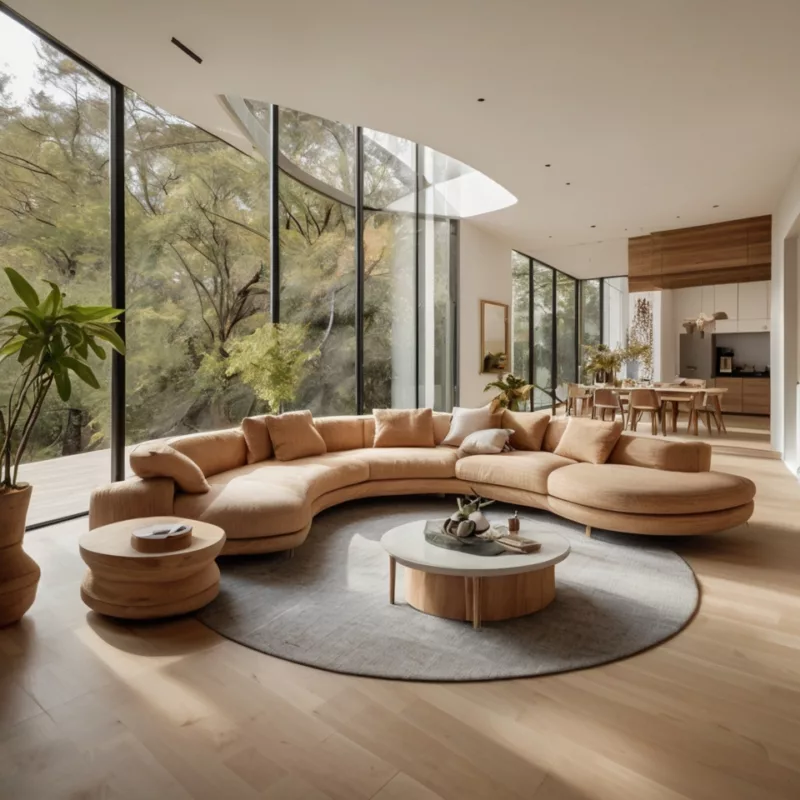
Energy-Efficient Production Methods
Leading sustainable furniture manufacturers have revolutionized their production processes to minimize energy consumption and environmental impact. Solar-powered facilities, energy-efficient machinery, and optimized workflow designs significantly reduce the carbon footprint associated with sustainable furniture production.
Advanced kiln-drying techniques used in sustainable furniture manufacturing consume less energy while achieving superior moisture control in wood components. This precision drying process enhances the longevity and stability of sustainable furniture pieces while reducing energy costs.
Computer-controlled cutting systems optimize material usage in sustainable furniture production, minimizing waste while maximizing the yield from each piece of raw material. These technologies ensure that sustainable furniture manufacturing maintains both environmental responsibility and economic efficiency.
Waste Reduction Strategies
Zero-waste manufacturing approaches in sustainable furniture production transform wood shavings, sawdust, and offcuts into useful products rather than sending them to landfills. Sawdust becomes compressed particleboard cores, while larger offcuts are crafted into smaller sustainable furniture accessories.
Closed-loop water systems in sustainable furniture finishing processes filter and reuse water multiple times before treatment and release. This approach dramatically reduces water consumption and prevents contamination of local water sources.
Packaging innovations for sustainable furniture include biodegradable protective materials, minimal packaging designs, and flat-pack configurations that reduce shipping volume and associated carbon emissions.
Certifications and Standards for Sustainable Furniture
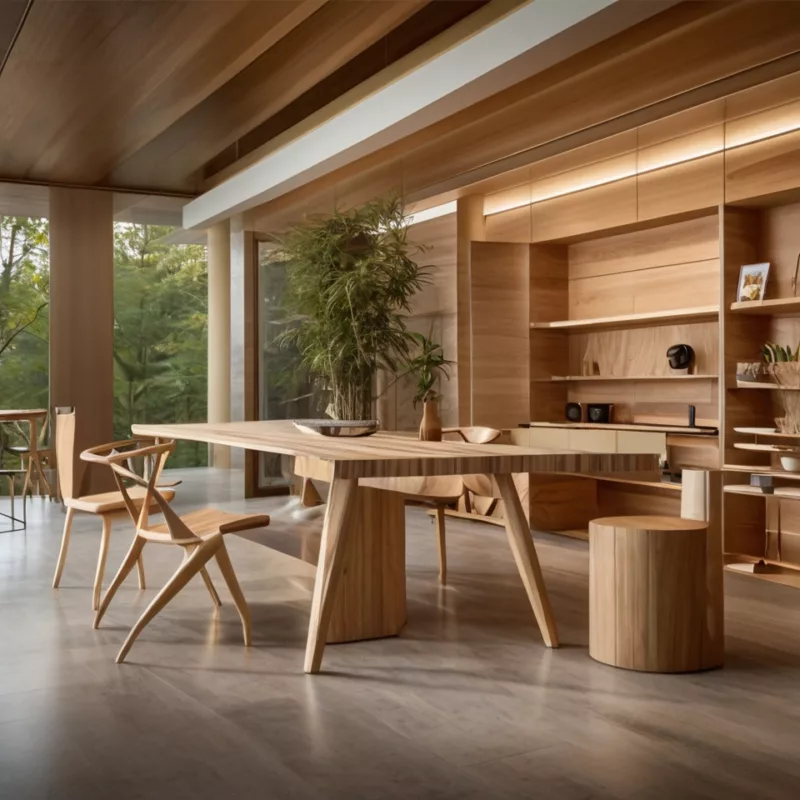
Forest Stewardship Council (FSC) Certification
FSC certification represents the gold standard for sustainable furniture wood sourcing. This rigorous certification process evaluates forest management practices across environmental, social, and economic criteria. Sustainable furniture bearing FSC certification guarantees that wood components originate from responsibly managed forests.
The FSC chain-of-custody certification tracks certified wood from forest to finished sustainable furniture product, ensuring no mixing with non-certified materials occurs during manufacturing. This comprehensive tracking system maintains the integrity of sustainable furniture claims throughout the entire supply chain.
GREENGUARD Certification
GREENGUARD certification focuses on indoor air quality, testing sustainable furniture for chemical emissions that could impact human health. Sustainable furniture with GREENGUARD certification meets strict limits for over 10,000 chemicals and maintains these standards throughout the product’s useful life.
GREENGUARD Gold certification, an even more stringent standard, ensures that sustainable furniture meets the chemical emission requirements for sensitive individuals, including children and those with chemical sensitivities.
Cradle to Cradle Certification
This holistic certification evaluates sustainable furniture across five categories: material health, renewable energy use, water stewardship, social fairness, and material reutilization. Sustainable furniture achieving Cradle to Cradle certification demonstrates comprehensive environmental and social responsibility.
The scoring system ranges from Basic to Platinum levels, allowing consumers to understand the degree of sustainability achieved by different sustainable furniture options. This transparency helps informed decision-making when selecting sustainable furniture pieces.
Choosing Durable Sustainable Furniture
Construction Quality Indicators
Quality construction techniques significantly impact the longevity of sustainable furniture. Dovetail joints, mortise and tenon connections, and other traditional joinery methods create stronger, more durable bonds than simple screws or glue-only construction in sustainable furniture.
Solid wood construction versus veneer-over-particleboard significantly affects sustainable furniture durability. While high-quality veneer construction can be acceptable, solid wood sustainable furniture typically offers superior longevity and can be refinished multiple times throughout its lifespan.
Hardware quality in sustainable furniture should match the environmental standards of other components. Solid brass, stainless steel, or powder-coated steel hardware provides longevity that matches well-constructed sustainable furniture frames.
Design for Longevity
Timeless design principles ensure that sustainable furniture remains aesthetically pleasing for decades. Classic proportions, clean lines, and neutral color palettes prevent sustainable furniture from appearing dated as trends change.
Modular sustainable furniture designs allow for reconfiguration and expansion as needs change. This adaptability extends the useful life of sustainable furniture by accommodating different spaces and functions throughout its lifetime.
Repairable design considerations in sustainable furniture include replaceable components, accessible hardware, and construction methods that allow for disassembly and reassembly. These features enable maintenance and repairs that extend sustainable furniture lifespan significantly.
Room-by-Room Sustainable Furniture Guide
Living Room Sustainable Furniture
The living room serves as the heart of most homes, making sustainable furniture choices here particularly impactful. Sustainable sofas and sectionals should feature kiln-dried hardwood frames, natural latex cushioning, and organic or recycled fabric upholstery for optimal environmental responsibility and comfort.
Coffee tables and side tables crafted from reclaimed wood or certified sustainable lumber provide functional surfaces while supporting responsible forestry practices. These sustainable furniture pieces often become focal points that showcase the natural beauty of eco-friendly materials.
Entertainment centers and media storage solutions in sustainable furniture should accommodate evolving technology needs while maintaining structural integrity for decades. Modular designs allow for adaptation as entertainment systems change over time.
Bedroom Sustainable Furniture
Bedroom sustainable furniture directly impacts sleep quality and personal health, making material choices particularly important. Solid wood bed frames constructed without metal fasteners eliminate potential squeaking while providing robust support for quality mattresses.
Sustainable dressers and wardrobes should offer ample storage while maintaining compact footprints that work in various room configurations. Dovetail drawer construction and soft-close hardware ensure smooth operation for years of daily use.
Nightstands crafted from sustainable materials should provide convenient storage while complementing bed frame aesthetics. Built-in wireless charging surfaces and cable management features add modern functionality to traditional sustainable furniture craftsmanship.
Dining Room Sustainable Furniture
Dining tables represent significant investments in sustainable furniture that should accommodate both daily meals and special occasions. Extension mechanisms should operate smoothly and store compactly while maintaining table stability in all configurations.
Dining chairs must balance comfort, durability, and aesthetic appeal in sustainable furniture design. Ergonomic considerations ensure comfortable seating for extended meals, while robust construction withstands frequent use and rearrangement.
Storage solutions like buffets and china cabinets in sustainable furniture should provide organization for dinnerware while displaying cherished items attractively. Adjustable shelving accommodates items of varying sizes throughout changing needs.
Home Office Sustainable Furniture
The rise of remote work has increased demand for sustainable furniture that supports productivity while maintaining environmental responsibility. Ergonomic desks crafted from sustainable materials should provide adequate workspace while promoting proper posture during long work sessions.
Office chairs represent critical sustainable furniture investments that directly impact health and productivity. Natural latex cushioning, breathable organic fabrics, and adjustable features ensure comfort during extended work periods.
Storage solutions for home offices should organize supplies efficiently while maintaining clean aesthetics that support focus and creativity. Modular systems allow for expansion as business needs grow and change.
Budget Considerations for Sustainable Furniture
Cost-Benefit Analysis
While sustainable furniture often requires higher initial investment compared to conventional alternatives, long-term value calculations typically favor environmentally responsible choices. Quality sustainable furniture pieces often last 20-30 years or longer, compared to 5-10 years for conventional furniture.
The total cost of ownership for sustainable furniture includes purchase price, maintenance costs, and replacement frequency. When calculated over typical ownership periods, sustainable furniture often provides superior value despite higher upfront costs.
Health benefits associated with sustainable furniture—including improved indoor air quality and reduced chemical exposure—provide additional value that’s difficult to quantify but nonetheless significant for family wellbeing.
Financing Options
Many sustainable furniture retailers offer financing programs that make environmentally responsible choices more accessible to budget-conscious consumers. Interest-free payment plans spread costs over manageable periods while allowing immediate enjoyment of sustainable furniture benefits.
Some credit cards offer special financing terms for environmentally responsible purchases, including sustainable furniture. These programs recognize the long-term benefits of sustainable choices while making them more accessible to conscientious consumers.
Trade-in programs offered by some sustainable furniture manufacturers provide credit toward new purchases when customers upgrade existing pieces. This approach supports circular economy principles while making sustainable furniture more affordable.
Investment Priorities
When budgeting for sustainable furniture, prioritizing pieces that receive heavy daily use typically provides the best return on investment. Beds, sofas, and dining tables justify higher sustainable furniture expenditures due to their impact on daily comfort and long-term durability requirements.
Accent pieces and decorative sustainable furniture can often be acquired through vintage sources, estate sales, or DIY projects at lower costs while maintaining environmental responsibility. This approach allows budget allocation toward higher-priority sustainable furniture investments.
Phased purchasing strategies help spread sustainable furniture costs over time while gradually upgrading living spaces. This approach allows for careful selection of each piece while avoiding overwhelming financial commitments.
Maintenance and Care for Sustainable Furniture
Preventive Care Strategies
Proper maintenance significantly extends the lifespan of sustainable furniture while preserving its appearance and functionality. Regular dusting with microfiber cloths prevents particle buildup that can scratch finishes and accelerate wear on sustainable furniture surfaces.
Humidity control protects wooden sustainable furniture from expansion and contraction that can cause joints to loosen and finishes to crack. Maintaining 45-55% relative humidity provides optimal conditions for sustainable furniture longevity.
Sunlight protection prevents fading and deterioration of sustainable furniture finishes and fabrics. Strategic placement away from direct sunlight or use of window treatments helps preserve the appearance of sustainable furniture for decades.
Cleaning Protocols
Natural cleaning solutions work effectively on sustainable furniture while avoiding harsh chemicals that could damage eco-friendly finishes. Solutions of water and white vinegar provide safe, effective cleaning for most sustainable furniture surfaces.
Leather care for sustainable furniture requires pH-balanced conditioners that nourish natural materials without introducing harmful chemicals. Regular conditioning prevents cracking and maintains suppleness in sustainable furniture upholstery.
Fabric protection for sustainable furniture upholstery includes regular vacuuming, immediate spill cleanup, and periodic professional cleaning. These practices maintain appearance while extending the useful life of sustainable furniture textiles.
Repair and Restoration
Professional restoration services can rejuvenate sustainable furniture that shows signs of age or damage. Refinishing, reupholstering, and structural repairs often cost less than replacement while maintaining the environmental benefits of existing sustainable furniture.
DIY repair skills help maintain sustainable furniture between professional services. Basic techniques like tightening hardware, touching up finishes, and replacing worn components keep sustainable furniture functioning optimally.
Parts availability for quality sustainable furniture often exceeds that of mass-produced alternatives. Manufacturers of sustainable furniture typically maintain replacement parts inventories and repair services for their products long after initial purchase.
Top Sustainable Furniture Brands
Established Leaders
Several furniture manufacturers have built reputations based on sustainable practices and quality construction. These companies typically offer comprehensive sustainable furniture collections across multiple price points and style preferences.
West Elm’s commitment to sustainable furniture includes FSC-certified wood options, organic fabrics, and fair trade partnerships. Their sustainable furniture collections balance contemporary design with environmental responsibility at accessible price points.
Room & Board emphasizes American-made sustainable furniture crafted from responsibly sourced materials. Their focus on timeless design and quality construction ensures that sustainable furniture pieces remain relevant and functional for decades.
Emerging Innovators
Newer companies often push sustainable furniture innovation through creative material applications and manufacturing processes. These brands frequently offer unique designs that aren’t available from established manufacturers.
Medley Home specializes in non-toxic sustainable furniture made entirely in the United States. Their focus on health-conscious materials and local production creates sustainable furniture options for families with chemical sensitivities.
Floyd designs modular sustainable furniture systems that adapt to changing needs while minimizing waste. Their innovative approach to sustainable furniture emphasizes repairability and reconfiguration throughout ownership.
Artisan and Local Options
Local craftspeople often provide the most sustainable furniture options through custom construction using regional materials. These artisans typically offer personalization options and direct relationships that enhance the sustainable furniture experience.
Furniture cooperatives and maker spaces provide access to sustainable furniture construction techniques while supporting local economies. These resources help consumers create unique sustainable furniture pieces while learning valuable skills.
Estate sales and antique dealers offer pre-owned sustainable furniture options that embody ultimate sustainability through reuse. Vintage pieces often feature construction quality that exceeds modern alternatives while requiring minimal additional resources.
DIY and Upcycling Sustainable Furniture
Refinishing Techniques
Learning basic refinishing skills transforms worn sustainable furniture into beautiful, functional pieces while avoiding disposal costs and environmental impact. Sanding, staining, and protective coating application require minimal tools while providing significant results.
Paint techniques can completely transform the appearance of sustainable furniture while extending its useful life. Chalk paint, milk paint, and other eco-friendly options provide durable finishes without harmful chemical emissions.
Hardware updates provide cost-effective sustainable furniture improvements that significantly impact appearance and functionality. Replacing knobs, pulls, and hinges with quality alternatives refreshes sustainable furniture aesthetics while maintaining structural integrity.
Reupholstery Projects
Basic reupholstery skills allow sustainable furniture owners to update fabric choices while maintaining quality construction. Simple projects like dining chair seats provide excellent learning opportunities while improving sustainable furniture appearance.
Fabric selection for reupholstery projects should maintain the environmental standards of original sustainable furniture construction. Organic, recycled, or vintage textiles provide eco-friendly options that complement sustainable furniture values.
Professional reupholstery services offer expertise for complex sustainable furniture projects while maintaining environmental responsibility. These services often provide fabric sourcing assistance and warranty coverage for completed work.
Creative Repurposing
Repurposing sustainable furniture for new functions extends useful life while providing unique design solutions. Dining tables become desks, dressers transform into media centers, and chairs find new roles as plant stands or decorative elements.
Combination projects merge components from multiple sustainable furniture pieces to create custom solutions. This approach maximizes material utilization while producing unique pieces that perfectly fit specific needs and spaces.
Children’s furniture projects provide opportunities to involve family members in sustainable furniture creation while teaching valuable skills and environmental values. Simple projects like step stools or toy boxes offer manageable complexity for beginning builders.
Conclusion: Making Sustainable Furniture Choices
Choosing sustainable furniture represents an investment in both personal comfort and environmental stewardship. The comprehensive considerations outlined in this guide provide the foundation for making informed decisions that benefit households and the planet for generations to come.
The sustainable furniture market continues to evolve, offering increasingly sophisticated options that don’t require compromising style or functionality for environmental responsibility. As consumer demand grows, manufacturers respond with innovative materials, improved construction techniques, and more transparent sustainability practices.
Quality sustainable furniture proves that environmental responsibility and aesthetic appeal aren’t mutually exclusive. The most successful sustainable furniture pieces demonstrate that thoughtful design, quality materials, and skilled craftsmanship create products that enhance daily life while supporting broader environmental goals.
The key to successful sustainable furniture selection lies in understanding personal needs, researching available options, and making choices based on long-term value rather than short-term costs. This approach ensures that sustainable furniture investments provide satisfaction and environmental benefits throughout their extended lifespans.
As we move toward a more environmentally conscious future, sustainable furniture choices become increasingly important expressions of personal values and commitments to planetary stewardship. Every sustainable furniture purchase represents a vote for responsible manufacturing practices and environmental protection.
The journey toward sustainable furniture ownership begins with education, continues through careful selection, and extends through proper maintenance and care. By following the principles outlined in this comprehensive guide, consumers can confidently choose sustainable furniture that enhances their homes while supporting environmental responsibility for years to come.

